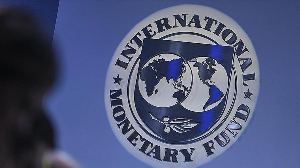There is an issue plaguing the banking sector which is slowly killing the economy of the country. Yes, I am talking about uncontrolled lending. It seems like the banks have lent relentlessly and this is causing them to accumulate a lot of Non-Performing Loans (NPLs).
Loans are considered to be non-performing when they are equal to or greater than 90 days in arrears or where management believes a loss may be incurred.
Ghana is right now in a dire need to revive private investment. In face of such a crisis, when the country has GH¢7.96 billion stressed assets at the end of June 2017, things are definitely serious.
The ratio of NPLs to total gross loans (NPL ratio) experienced an increasing trend between 2007 and 2010 from 6.37 per cent to 18.08 per cent and declined to 11.27 per cent in 2014 and thereafter increased to 17.70 per cent in 2016 and 21.2 per cent in June 2017.
Persistently, high NPLs hold down credit growth and economic activity High NPL ratios in Ghana have considerable and wide-ranging impacts; for both banks and society at large.
For banks, NPLs tie up part of their capital base without providing a commensurate return, reducing profitability and increasing capital requirements (NPLs have a ‘risk weight’ of 150 per cent under the Basel 3 Standardised Method).
For Ghanaian society, a banking system which is not firing on all cylinders due to the drag of NPLs, does not have the capacity to drive net new lending (in particular to SMEs).
This constrains economic growth and disrupts the functioning of the monetary policy transmission mechanism (from the central bank to real-economy borrowers).
Accelerating the resolution of NPL in Ghana requires a comprehensive approach based on three key pillars:
a) Enhanced prudential oversight
Despite the Asset Quality Review launched in 2016, little had been achieved in resolving the underlying assets to which banks had lent because most of the assets still suffer from very high levels of bank debt.
Similar to Viral Acharya (Deputy Governor of Reserve Bank of India), I am proposing a “tough love” style approach towards the banks from now onwards.This is because this “tough love” measures will work towards the benefit of the banks but since they have been reckless towards lending in the past, such “tough love” measures will include the Bank of Ghana taking up the role of the parent who will put some additional regulations such as mandatory write-off and time-bound restructuring targets on banks’ NPL portfolios.
In addition, the Bank of Ghana should enforce the following provision under the Specialised Deposit-Taking Institutions (SDIs) Act, 2016 (Act 930) with no mercy:
- Banks with NPLs above a set threshold (for example, 10 per cent) should be subject to a more intensive oversight regime to ensure that they conservatively recognise and proactively address asset quality problems.
- Bank of Ghana exercising its powers under Section 93 of the Act to require banks to submit accurate information to credit bureaus and applying the penalty for the submission of inaccurate, incomplete, delayed and non-submitted information to credit bureaus.
- Enforcing conservative provisioning and write off guidance under International Financial Reporting Standards (IFRS) 9- Section 78
- Fix the delay in write off of a loans. Loan in default for at least a year is classified as loss and required to be fully provided for but their write off may take another four years. The average four years to write off a loan after classified as loss is made up of 1) three years to obtain judgment to auction a collateral in Ghana and 2) two years to sell the collateral.
On average, most recovery portfolio loans are legal cases have an average profile of 60 months. Hence, a loan classified as loss will take another four years to be written off, this is because banks want to exhaust workout process before write-off. Two approaches to fix this delay in write off after a loan is classified as loss include:
(a) Uniform regulatory write off guidelines for each customer type of loans. Exercise the right to prescribe rules to ensure timely write off of loans ( recommendation of such rules are term retail loans that are delinquent and no greater than 120 days should be classified as losses and written off. Revolving retail accounts (e.g. overdraft): amounts that are delinquent and no greater than 180 cumulative days from the contractual due date should be classified as Loss and written-off , unsecured corporate loans written off three months after 90 days past due or three months after sub-standard and secured corporate loans written off 3 to 6 months after a loan classified as loss). Section 75
(b) Flexibility in classification of loans as “Loss” for corporate loans. In my view, risk grading should take into account the unique attributes of the loan, accordingly, for a retail loan, a loan past due 120 days should be classified as loss rather than waiting for 360 days to do so.
The quality of retail credit is best indicated by the repayment performance of individual borrowers, hence consumer loan classification should be based primarily on number of days in delinquency. On the other hand, in my view, the number of days past due should not play a key role in classification of the commercial loan as loss, especially when the company is in operation or perfect collateral exists. Some commercial loans which are 360 days past due should not be considered as loss but rather as doubtful or substandard. The evaluation of each commercial loan should be based upon the fundamental characteristics affecting the collectability of the particular credit which are:
1) Borrower specific factors (example: borrower’s financial condition, credit rating, credit score, asset quality, or business prospect etc.).
2) Transaction/loan specific ( example : structure of facility, tenure of facility, repayment structure, volume and severity of past due financial asset(s) and the volume and severity of adversely classified or rated financial asset(s), the value of underlying collateral on financial assets, etc. ).
3) Macro-economic factors (example: Treasury bill rate, Inflation, GDP, exchange rate, etc.).
4) Bank/internal specific factors ( example : The bank’s lending policies and procedures, the quality of the bank’s credit review system , The experience, ability, and depth of the bank’s management, lending and other relevant staff etc.) and
5) Environmental factors (example: Regulatory, legal and technological environment to which the bank has exposure, etc.)
Opinions of Wednesday, 20 September 2017
Columnist: Emmanuel Akrong



















